Lexus (レクサス Rekusasu?) is the luxury vehicle division of Japanese car maker Toyota. The Lexus marque is marketed in more than 70 countries and territories worldwide[1] and has become Japan’s largest-selling make of premium cars. It has ranked among the 10 largest Japanese global brands in market value.[2] Lexus is headquartered in Nagoya, Japan. Operational centers are located in Brussels, Belgium and the U.S. in Torrance, California.
Lexus originated from a corporate project to develop a new premium sedan, code-named F1, which began in 1983 and culminated in the launch of the Lexus LS in 1989. Subsequently, the division added sedan, coupé, convertible and SUV models. Lexus did not exist as a brand in its home market until 2005, and all vehicles marketed internationally as Lexus from 1989 to 2005 were released in Japan under the Toyota marque and an equivalent model name. In 2005, a hybrid version of the RX crossover debuted and additional hybrid models later joined the division’s lineup. Lexus launched its own F marque performance division in 2007 with the debut of the IS F sport sedan, followed by the LFA supercar in 2009.
Lexus vehicles are largely produced in Japan, with manufacturing centered in the Chūbu and Kyūshū regions, and in particular at Toyota’s Tahara, Aichi, Chūbu and Miyata, Fukuoka, Kyūshū plants. Assembly of the first Lexus built outside the country, the Ontario, Canada–produced RX 330, began in 2003. Following a corporate reorganization from 2001 to 2005, Lexus began operation of its own design, engineering and manufacturing centers.
Since the 2000s, Lexus has increased sales outside its largest market, the United States. The division inaugurated dealerships in Japan’s domestic market in 2005, becoming the first Japanese premium car marque to launch in its country of origin.[3] The brand was introduced in Southeast Asia, Latin America, Europe and other regions. The division’s lineup also reflects regional differences for model and powertrain configurations.
History
1980s: The F1 project
In 1983, Toyota chairman Eiji Toyoda issued a challenge to build the world’s best car.[4] The project, code-named F1 (“Flagship One”)[5] developed the Lexus LS 400 to expand Toyota’s product line in the premium segment.[6] The F1 project followed the Toyota Supra sports car and the premium Toyota Mark II models.[7] Both the Supra and Mark II were rear-wheel drive cars with a powerful 7M-GE or 7M-GTE inline-six engine. The largest sedan Toyota built at the time was the limited-production, 1960s-vintage Toyota Century, a domestic, hand-built limousine, and V8-powered model,[8] followed by the inline-six-engined Toyota Crown premium sedan.[8][9] The Century was conservatively styled for the Japanese market and along with the Crown not slated for export after a restyle in 1982.[9] The F1 designers targeted their new sedan at international markets and began development on a new V8 engine.
Japanese manufacturers exported more expensive models in the 1980s due to voluntary export restraints negotiated by the Japanese government and U.S. trade representatives that restricted mainstream car sales.[10] In 1986, Honda launched its Acura marque in the U.S., influencing Toyota’s plans for a luxury division.[11] The initial Acura model was an export version of the Honda Legend, itself launched in Japan in 1985 as a rival to the Toyota Crown, Nissan Cedric/Gloria and Mazda Luce.[12] In 1987, Nissan unveiled its plans for a premium brand, Infiniti,[13] and revised its Nissan President sedan in standard wheelbase form for export as the Infiniti Q45, which it launched in 1990.[14] Mazda began selling the Luce as the Mazda 929 in North America in 1988 and later began plans to develop an upscale marque to be called Amati, but its plans did not come to fruition.[13]
Toyota researchers visited the U.S. in May 1985 to conduct focus groups and market research on luxury consumers.[15]During that time, several F1 designers rented a home in Laguna Beach, California to observe the lifestyles and tastes of American upper class consumers.[15] Meanwhile, F1 engineering teams conducted prototype testing on locations ranging from the German autobahn to U.S. roads.[16] Toyota’s market research concluded that a separate brand and sales channel were needed to present its new sedan, and plans were made to develop a new network of dealerships in the U.S. market.[17]
Brand development
In 1986, Toyota’s longtime advertising agency Saatchi & Saatchi formed a specialized unit, Team One, to handle marketing for the new brand.[11] Image consulting firm Lippincott & Margulies was hired to develop a list of 219 prospective names; Vectre, Verone, Chaparel, Calibre and Alexis were chosen as top candidates.[18]While Alexis quickly became the front runner, concerns were raised that the name applied to people more than cars (being associated with the Alexis Carrington character on the popular 1980s prime time drama Dynasty).[18][19] As a result, the first letter was removed and the “i” replaced with a “u” to morph the name to Lexus.
Theories of the etymology of the Lexus name have suggested it is the combination of the words “luxury” and “elegance,”[20]and that it is an acronym for “luxury exports to the U.S.”[20] According to Team One interviews, the brand name has no specific meaning and simply denotes a luxurious and technological image.[18] Prior to the release of the first vehicles, database service LexisNexis obtained a temporary injunction forbidding the name Lexus from being used because it might cause product confusion.[21] The injunction threatened to delay the division’s launch and marketing efforts.[21] The U.S. appeals court lifted the injunction, deciding that there was little likelihood of confusion between the two products.[21]
The original Lexus slogan, developed after Team One representatives visited Lexus designers in Japan and noted an obsessive attention to detail, became “The Relentless Pursuit of Perfection.“[22] The Lexus logo was developed by Molly Designs and Hunter Communications.[23][24] The final design for the Lexus logo featured a stylized “L” within an oval, and according to Toyota, was rendered using a mathematical formula.[18] The first teaser ads featuring the Lexus name and logo appeared at the Chicago, Los Angeles and New York auto shows in 1988.[25]
Launch
The F1 project was completed in 1989, involving 60 designers, 24 engineering teams, 1,400 engineers, 2,300 technicians, 220 support workers, approximately 450 prototypes and more than $1 billion in costs.[26] The resulting car, the Lexus LS 400, had a design that shared no major elements with previous Toyota vehicles, with a new 4.0 L V8 gasoline engine and rear-wheel drive.[27][28] The car debuted in January 1989 at the North American International Auto Show in Detroit[13] and sales of the vehicle began the following September at a network of 81 new Lexus dealerships in the U.S.[29] The LS 400 was sold along with the smaller ES 250, a rebadged version of the Japanese market Toyota Camry Prominent/Toyota Vista.[16] The launch of Lexus was accompanied by a multimillion-dollar advertising campaign.
The LS 400 was praised for its quietness, well-appointed and ergonomic interior, engine performance, build quality, aerodynamics, fuel economy and value.[16][31] However, it was criticized by some automobile columnists for derivative styling and a suspension regarded as too compromising of handling for ride comfort.[16][32] In some markets it was priced against mid-size, six-cylinder Mercedes-Benz and BMW models.[33] It was rated by Car and Driver magazine as better than the higher-priced Mercedes-Benz 420 SEL and BMW 735i in terms of ride, handling and performance.[34] The LS 400 also won motoring awards from automotive publications including Automobile Magazine and Wheels Magazine.[35][36] Lexus quickly established customer loyalty and its debut was generally regarded as a shock to existing luxury marques. BMW’s and Mercedes-Benz’s U.S. sales figures dropped 29 percent and 19 percent, respectively, with BMW executives accusing Lexus of dumping in that market, while 35 percent of Lexus buyers traded in a Lincoln or Cadillac.[34]
In December 1989, Lexus initiated a voluntary recall of all 8,000 LS 400s based upon two customer complaints over defective wiring and an overheated brake light.[34] A 20-day operation to replace the parts on affected vehicles included technicians to pick up, repair and return cars to customers free of charge, and also flying personnel and renting garage space for owners in remote locations.[34] This response was covered in media publications and helped establish the marque’s early reputation for customer service.[37][38]
By the end of 1989, a total of 16,392 LS 400 and ES 250 sedans were sold in the four months following the U.S. launch.[39] Although sales had begun at a slower pace than expected, the final tally matched the division’s target of 16,000 units for that year.[40] Following initial models, plans called for the addition of a sports coupe along with a redesigned ES sedan.
1990s: Growth and expansion
In 1990, during its first full year of sales, Lexus sold 63,594 LS 400 and ES 250 sedans in the U.S.,[42] the majority being the LS model.[42] That year, Lexus also began limited exports to the United Kingdom, Switzerland, Canada and Australia.[16][43]In 1991, Lexus launched its first sports coupe, the SC 400, which shared the LS 400’s V8 engine and rear-wheel drive design.[41] This was followed by the second generation ES 300 sedan, which succeeded the ES 250 and became Lexus’ top seller.[41] At the conclusion of 1991, Lexus had become the top-selling premium car import in the U.S.,[44][45] with sales reaching 71,206 vehicles.[42] That year, Lexus ranked highest in J.D. Power and Associates‘ studies on initial vehicle quality, customer satisfaction and sales satisfaction for the first time.[46] The marque also began increasing U.S. model prices past those of comparable American premium makes, but still below high-end European models.[45] By 1992, the LS 400’s base price had risen 18 percent.[47]
In 1993, Lexus launched the mid-size GS 300 sports sedan, based on the Toyota Aristo using the Toyota “S” platform from the Toyota Crown, which had sold for two years prior in Japan.[41] The GS 300 was priced below the LS 400 in the marque’s lineup.[48] That same year, Lexus became one of the first marques to debut a certified pre-owned program, with the aim of improving trade-in model values.[49] The marque introduced the second generation LS 400 in 1994.[50] In May 1995, sales were threatened by the U.S. government’s proposal of 100 percent tariffs on upscale Japanese cars in response to the widening U.S.-Japan trade deficit.[51]SUVs were exempt from the proposed sanctions.[52] Normal sales operations resumed by late 1995 when the Japanese auto manufacturers collectively agreed to greater American investments and the tariffs were not enacted.
In 1996, Lexus debuted its first sport utility vehicle, the LX 450,[53] followed by the third generation ES 300 sedan. The marque’s plans for developing an SUV model had accelerated during the U.S.-Japan tariff discussions of 1995.[52] Lexus added the first luxury-branded crossover SUV, the RX 300, and the second generation GS 300 and GS 400 sedans in 1998. The RX crossover targeted suburban buyers who desired an upmarket SUV but did not need the LX’s off-road capability.[54]It was particularly successful, eventually becoming the marque’s top-selling model ahead of the ES sedan.[54] The same year, Lexus made its debut in South America’s most populous country when it launched sales in Brazil.[55][56] In 1999, Lexus recorded its 1 millionth vehicle sold in the U.S. market[44] and was ranked the top-selling premium car maker in the U.S. overall.
2000s: Global reorganization
In 2000, Lexus introduced the IS line, a series of entry-level sport sedans. In 2001, the first convertible was introduced, as well as the SC 430, a redesigned ES 300 and the third generation LS 430.[57] The GX 470 mid-size SUV debuted in 2002, followed by the second generation RX 330 in 2003.[58] The following year, Lexus recorded its 2 millionth U.S. vehicle sale,[59][60] and the first luxury-branded production hybrid SUV, the RX 400h.[61] This vehicle used Toyota’s Hybrid Synergy Drive system that combined gasoline and electric motors.[62]
In 2005, Lexus completed an organizational separation from parent company Toyota,[63] with dedicated design, engineering, training, and manufacturing centers working exclusively for the division.[64][65] This effort coincided with Lexus’ launch in its home market of Japan and an expanded global launch of the brand in markets such as China.[65][66] Executives aimed to increase Lexus sales outside of its largest market in the U.S.[65][67] To accompany this expansion, next generation Lexus vehicles were redesigned as “global models” for international release.[68] In the European market, where Lexus had long faced struggling sales owing to low brand recognition, few dedicated dealerships, and 1990s import quotas,[69][70] the marque announced plans to introduce hybrid and diesel powertrains,[71] increase the number of Lexus dealerships, and expand operations in emerging markets such as Russia.
Lexus’ arrival in the Japanese market in July 2005 marked the first introduction of a Japanese premium car marque in the domestic market.[3] New generation LS, IS, ES, GS, and RX models subsequently became available in Japan along with the SC 430, ending domestic sales of Toyota-branded models under the Celsior, Altezza, Windom, Aristo, Harrier, and Soarer nameplates, respectively. The Altezza and Aristo were previously exclusive to Japanese Toyota retail sales channels called Toyota Vista Store, the Windom was exclusive to Toyota Corolla Store, the Celsior and Harrier were exclusive to Toyopet Store, and the Soarer was previously available at both Toyota Store and Toyopet Store locations.[74][75] Lexus models sold in Japan featured higher specifications and a price premium compared with their discontinued Toyota counterparts.[74] Sales for the first half-year were slower than expected,[76] affected by the contraction of the domestic auto market and price increases,[77] but improved in subsequent months with an expanded lineup.[77][78]
Through the mid-2000s, Lexus experienced sales successes in South Korea and Taiwan, becoming the top-selling import make in both markets in 2005;[79][80] the marque also sold well in the Middle East, where it ranked first or second among rivals in multiple countries,[81] and in Australia, where Lexus reached third in luxury car sales in 2006.[82][83] Division executives in 2006 announced an expansion goal from 68 countries to 76 worldwide by 2010.[84] By the end of the decade, this expansion resulted in official launches in Malaysia and South Africa in 2006,[85][86] Indonesia in 2007,[87] Chile in 2008,[88][89] and the Philippines in 2009.[90]
Hybrids and F models
In 2006, Lexus began sales of the GS 450h, a V6 hybrid performance sedan,[91] and launched the fourth generation LS line, comprising both standard- and long-wheelbase V8 (LS 460 and LS 460 L) and hybrid (LS 600h and LS 600h L) versions.[92] The fifth generation ES 350 also debuted in the same year. The LS 600h L subsequently went on sale as the most expensive sedan ever produced in Japan.[93] By the end of 2006, Lexus’ annual sales had reached 475,000 vehicles worldwide.[94] In January 2007, Lexus announced a new F marque performance division, which would produce racing-inspired versions of its performance models. The IS F, made its debut at the 2007 North American International Auto Show,[95] accompanied by a concept car, the LF-A.
In October 2007, Lexus entered the Specialty Equipment Market Association show in the U.S. for the first time with the IS F, and announced its F-Sport performance trim level and factory-sanctioned accessory line.[96] Increased emphasis on sporty models was an effort to target rivals from Mercedes-Benz’s AMG and BMW’s M divisions.[95][97] Models such as the SC 400 and GS 400 had received favorable reactions from sport luxury buyers,[98] most Lexus models had been characterized as favoring comfort over sporty road feel and handling, compared with European rivals.[99] By the end of 2007, Lexus annual worldwide sales had surpassed 500,000 vehicles,[100] and the marque ranked as the top-selling premium import in China for the first time.[101] The largest sales markets in order of size for 2007 were the U.S., Japan, the UK, China, Canada, and Russia.[94][102]
In 2008, amidst the late-2000s recession and a weakened world car market, global sales fell 16 percent to 435,000,[103][104][105] with declines in markets such as the U.S. and Europe where deliveries fell by 21 percent and 27.5 percent, respectively.[106][107] In 2009, the marque launched the HS 250h,[108] a dedicated hybrid sedan for North America and Japan, the RX 450h, the second generation hybrid SUV replacing the earlier RX 400h, and later that year debuted the US$375,000 production LFA exotic coupe.[109] In late 2009, citing higher sales of hybrid models over their petrol counterparts,[110][111] Lexus announced plans to become a hybrid-only marque in Europe.[112] By the end of the decade, Lexus ranked as the fourth-largest premium car make in the world by volume,[113] and was the number one selling premium car marque in the U.S. for 10 consecutive years
2010s: Recent developments
In 2010, Lexus underwent a gradual sales recovery in North America and Asia as the marque focused on adding hybrids and new model derivatives.[81] Sales in the U.S. held steady despite the 2009–2010 Toyota vehicle recalls, several of which included Lexus models.[115] The ES 350 and certain IS models were affected by a recall for potentially jamming floor mats,[115] while parent company Toyota bore the brunt of negative publicity amid investigations over its series of product recalls and problem rates per-vehicle.[115][116] The redesigned GX 460 was also voluntarily recalled in April 2010 for a software update, one week after Consumer Reports issued a recommendation not to buy the SUV, citing a possible rollover risk following the slow stability control response to a high-speed emergency turn.[117] Although the publication knew of no reported incidents, the GX 460 received updated stability control software.[117]
In late 2010 and early 2011, Lexus began sales of the CT 200h, a compact four-door hybrid hatchback designed for Europe, in multiple markets.[118][119] Sales of lower-displacement regional models were also expanded, beginning with the ES 240 in China followed by the RX 270; Japan, Russia, and Taiwan were among markets which received model variants intended for reduced emissions or import taxes.[120][121] In March 2011, the Tōhoku earthquake and tsunami caused severe disruption to Lexus’ Japan-based production lines, hindering the marque’s near-term sales prospects.[122] Lexus’ U.S. executives stated that due to vehicle shortages amidst close competition from BMW, Mercedes-Benz, and Audi, the marque would not remain the country’s top-selling premium car brand.
Cumulative sales results for 2011 indicated a 14 percent sales drop in the U.S. market,[123] along with sales increases of 40 percent and 27 percent in Europe and Japan respectively,[124][125] for a global sales total of 410,000 units.[126] Lexus’ streak of 11 consecutive years as the best-selling luxury marque in the U.S. ended that year, with the title going to BMW followed by Mercedes-Benz.[127] While 45 percent of Lexus sales in the U.S. in 2011 relied upon the RX luxury crossover SUV, rival Mercedes-Benz’s best-selling offering was the E-Class mid-luxury sedan, which commands considerably higher prices.[128]Subsequently, Toyota chairman Akio Toyoda vowed to restore passion to the marque and further increase its organizational independence, admitting that “…back then we did not regard Lexus as a brand, but as a distribution channel”. As a result of Toyoda’s organizational changes, Lexus senior managers report directly to the chairman for the first time in the marque’s history.[127][128]
In January 2012, the marque began sales of the fourth generation GS line, including GS 350 and GS 450h variants, as well as a lower-displacement GS 250 model for select markets.[129] In April 2012, the sixth generation ES line, include ES 350 and ES 300h variants, debuted at the New York International Auto Show.[130]
In April 2014, Lexus unveiled the five-seater NX crossover. The vehicle features a very first for a Lexus vehicle: a turbocharger. Its nomenclature is denoted as the 200t. In August 2014, Toyota announced it would be cutting its Lexus spare parts prices in China by up to 35 percent. The company admitted the move was in response to a probe foreshadowed earlier in the month by China’s National Development and Reform Commission of Lexus spare parts policies, as part of an industry-wide investigation into what the Chinese regulator considers exorbitantly high prices being charged by automakers for spare parts and after-sales servicing.[131]
In March 2016, Lexus announced that it will be producing a new flagship vehicle: the two-door LC 500. The vehicle will be produced for late 2017 in a V8 version putting out 467 horsepower. The LC 500h, a V6 hybrid variant, could potentially become available in late 2017 or early 2018.
List of Lexus vehicles
The following is a list of Lexus vehicles, including past and present production models, as well as concept vehicles and limited editions. Model generations are ordered by year of introduction. This list dates back to the start of production in 1989 for the 1990 model year, when Lexus was founded as the luxury division of Toyota. Vehicle designations on production vehicles indicate class and powertrain size.
- CT: compact FWD
- 2011 Lexus CT 200h
- 2014 Lexus CT 200h
- IS: compact RWD/AWD
- 2000 Lexus IS 200/IS 300
- 2006 Lexus IS 250/IS 250 AWD/IS 300/IS 350/IS 220d
- 2008 Lexus IS F
- 2010 Lexus IS 250 C/IS 300 C/IS 350 C/IS F
- 2011 Lexus IS 220d
- 2013 Lexus IS 250/IS 350/IS 300h
- 2015 Lexus IS 200t
- HS: compact FWD
- 2010 Lexus HS 250h
- 2013 Lexus HS 250h
- ES: midsize FWD
- 1990 Lexus ES 250
- 1992 Lexus ES 300
- 1997 Lexus ES 300
- 2004 Lexus ES 330
- 2007 Lexus ES 350
- 2010 Lexus ES 240
- 2013 Lexus ES 250/ES 300h/ES 350
- 2015 Lexus ES 200/ES 250/ES 300h/ES 350
- GS: midsize RWD/AWD
- 1993 Lexus GS 300
- 1998 Lexus GS 300/GS 400
- 2001 Lexus GS 430
- 2006 Lexus GS 300/GS 300 AWD/GS 430/GS 450h
- 2008 Lexus GS 350/GS 350 AWD/GS 460
- 2013 Lexus GS 250/GS 350/GS 350 AWD/GS 450h
- 2015 Lexus GS 200t/GS 250/GS 350/GS 350 AWD/GS 450h/GS F
- LS: full-size RWD/AWD
- SC: coupé/coupé convertible RWD
- 1992 Lexus SC 300/SC 400
- 2002 Lexus SC 430
- 2006 Lexus SC 430
- RC: coupé RWD
- 2014 Lexus RC 300h/RC 350/RC F
- 2016 Lexus RC 200t
- LC: coupé RWD
- 2016 Lexus LC 500/LC 500h
- LFA: exotic sports coupe RWD
- 2011 Lexus LFA
- 2012 Lexus LFA Nürburgring Package
- NX: compact crossover FWD/AWD
- 2014 Lexus NX 200t/NX 300h
- RX: midsize crossover FWD/AWD
- GX: midsize sport utility vehicle AWD
- 2003 Lexus GX 470
- 2011 Lexus GX 460
- 2014 Lexus GX 460
- LX: full-size sport utility vehicle AWD
- 1997 Lexus LX 450
- 1999 Lexus LX 470
- 2008 Lexus LX 470/LX 570
- 2013 Lexus LX 460/LX 570
- 2016 Lexus LX 570
F Sport models
- CT F Sport
- 2011 Lexus CT 200h F Sport
- 2014 Lexus CT 200h F Sport
- IS F Sport
- 2011 Lexus IS 250/350/200d/250 C/350 C F Sport
- 2013 Lexus IS 250/300h/350 F Sport
- GS F Sport
- 2013 Lexus GS 350 F Sport
- 2013 Lexus GS 450h F Sport
- LS F Sport
- 2013 Lexus LS 460 F Sport
- 2013 Lexus LS 600h F Sport
- RX F Sport
- 2013 Lexus RX 350 F Sport
- 2013 Lexus RX 450h F Sport
- NX F Sport
- 2014 Lexus NX 200t F Sport
- RC F Sport
- 2014 Lexus RC 350 F Sport
Special editions
- IS: compact RWD/AWD
- 2003 SportDesign IS 300
- 2007 Limited Edition IS 250 X
- 2007 Neiman Marcus Edition IS F
- 2007 “Elegant White” IS 250/350
- 2009 Special Edition IS 250 SR
- 2009 “Red-edge Black” IS 250/350
- 2009 “Blazing Terracotta” IS F
- 2010 “X-Edition” IS 250
- 2010 IS 350 C F Sport Special Edition
- 2011 Stone Works “Sunrise” IS 250
- ES: midsize FWD
- 1996 Coach Edition ES 300
- 1999 Coach Edition ES 300
- 2000 Platinum Edition ES 300
- 2004 SportDesign ES 330
- 2005 Black Diamond Edition ES 330
- 2009 Pebble Beach Edition ES 350
- GS: midsize RWD/AWD
- 2000 Platinum Series GS 300/400
- 2001 SportDesign GS 300
- 2007 Neiman Marcus Edition GS 450h
- 2009 “Passionate Black” GS 350/460/450h
- 2009 “Meteor Black” GS 350/460
- 2011 Stone Works “Sunset” GS 350
- LS: full-size RWD/AWD
- 1997 Coach Edition LS 400
- 2000 Platinum Series LS 400
- 2007 Neiman Marcus Launch Edition LS 600h L
- 2009 Pebble Beach Edition LS 600h L
- SC: coupé/coupé convertible RWD
- 2004 Pebble Beach Edition SC 430
- 2005 Pebble Beach Edition SC 430
- 2006 Pebble Beach Edition SC 430
- 2007, 2008, 2009 Pebble Beach SC 430
- 2010 “Eternal Jewel” SC 430
- LFA: exotic sports coupe RWD
- 2012 LFA Special Edition
- RX: midsize crossover SUV
- 2001 SilverSport Special Edition RX 300
- 2002 Coach Edition RX 300
- 2005 Thundercloud Edition RX 330
- 2009 Pebble Beach Edition RX 350
- 2011 Stone Works “Sunlight” RX 350
- LX: full-size sport utility vehicle
- 2007 Limited Edition LX 470
Concept vehicles
- LF series concepts
- 2003 LF-X: crossover
- 2003 LF-S: luxury sedan
- 2004 LF-C: convertible
- 2005 LF-A: sports coupe
- 2006 LF-Sh: hybrid luxury sedan
- 2007 LF-Xh: hybrid crossover
- 2008 LF-AR: roadster
- 2009 LF-Ch: compact hybrid
- 2011 LF-Gh: hybrid touring sedan
- 2012 LF-LC: hybrid coupe
- 2013 LF-NX: small crossover SUV
- 2013 LF-C2: RC convertible
- 2015 LF-SA: Compact car
- Production-based concepts
- 2003 Lexus IS 430 sports sedan
- 2004 Carolina Herrera SC 430 CH
- 2005 Milan Design Week “L-finesse” LF-A
- 2006 Milan Design Week “Evolving Fiber” LS 460
- 2007 Higashifuji Driving Simulator LS 460
- 2007 Milan Design Week “Invisible Garden” LS 600h L
- 2008 Milan Design Week “Elastic Diamond” LF-Xh
- 2008 IS F Racing concept
- 2009 LS 460 ITS-Safety Concept
- 2009 Crystallised Wind LFA
- 2010 IS F CCS Concept
- 2010 CT Umbra
- 2011 CT Racing concept
- Other concept vehicles
- 1994 Italdesign Lexus Landau: hatchback
- 1995 Lexus FLV: station wagon
- 1997 Lexus Street Rod: roadster
- 1997 Lexus SLV: sport luxury vehicle
- 1997 Lexus HPS: sports sedan
- 1999 Lexus Sports Coupe: convertible
- 2003 Lexus HPX: crossover
- 2009 Lexus HB: hybrid sports motorbike
- 2016 Lexus UX: crossover
- Number Série
- 2002 Lexus 2054
Concept vehicles scale 1:43
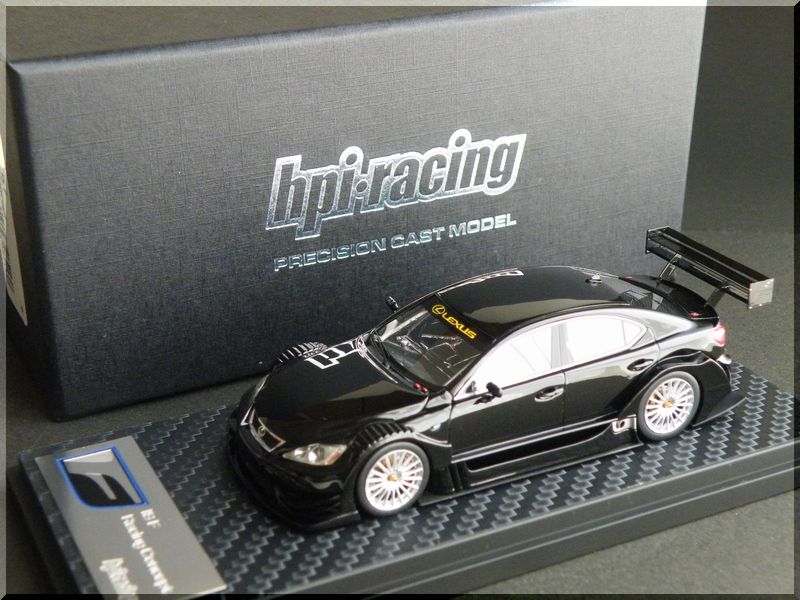
hpi Racing – Lexus IS F Racing Concept
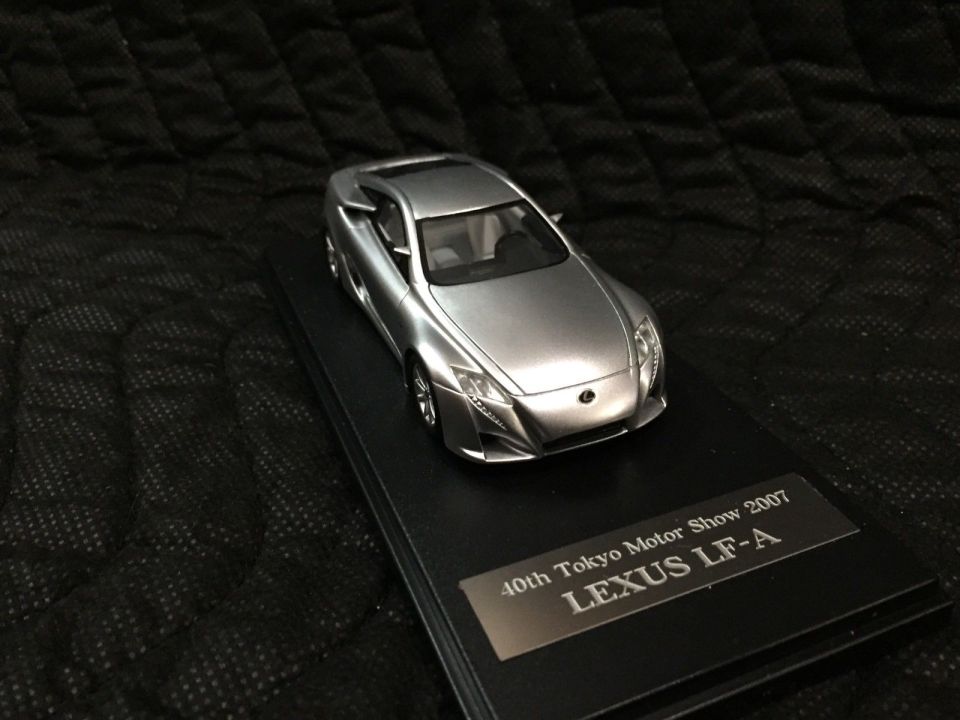
WIT’S TOYOTA LEXUS LFA ISF HYBIRD V10 CONCEPT CAR
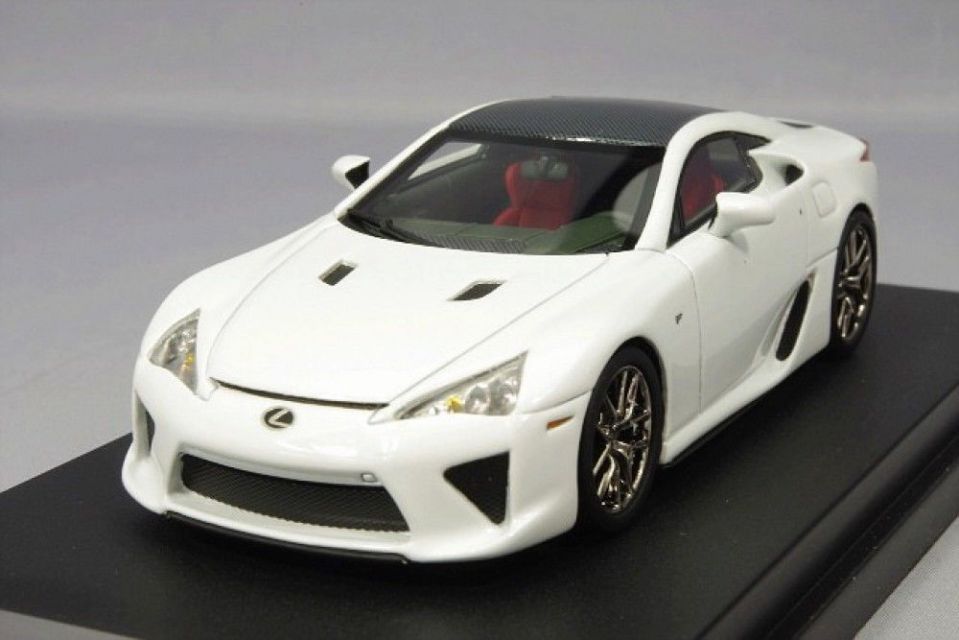
CAM@ – LEXUS LFA Tokyo Motor Show 2009
LEXUS CARS
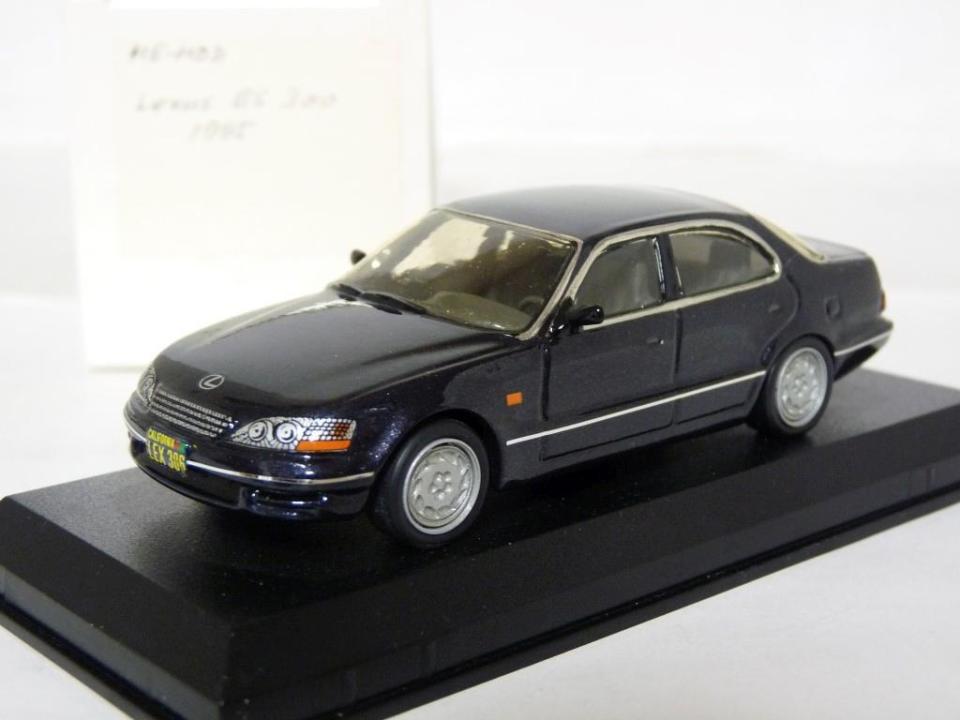
Me-Mod – Lexus ES300 3.0i V6 1993

HONGWELL – LEXUS – GS300 1998 – CON VETRINA – WITH SHOWCASE

HONGWELL – LEXUS – GS300 1998

HIGH SPEED – TOYOTA LEXUS GS300 LEXUS RACING GT CLUB CHAMP
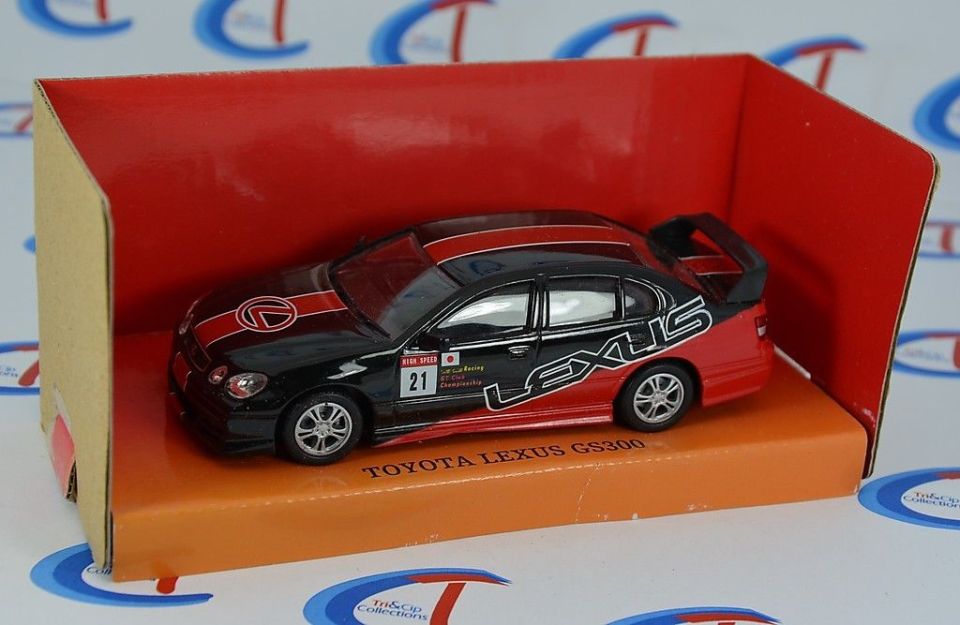
HEARVY METAL – TOYOTA LEXUS GS300 LEXUS RACING GT CLUB CHAMP
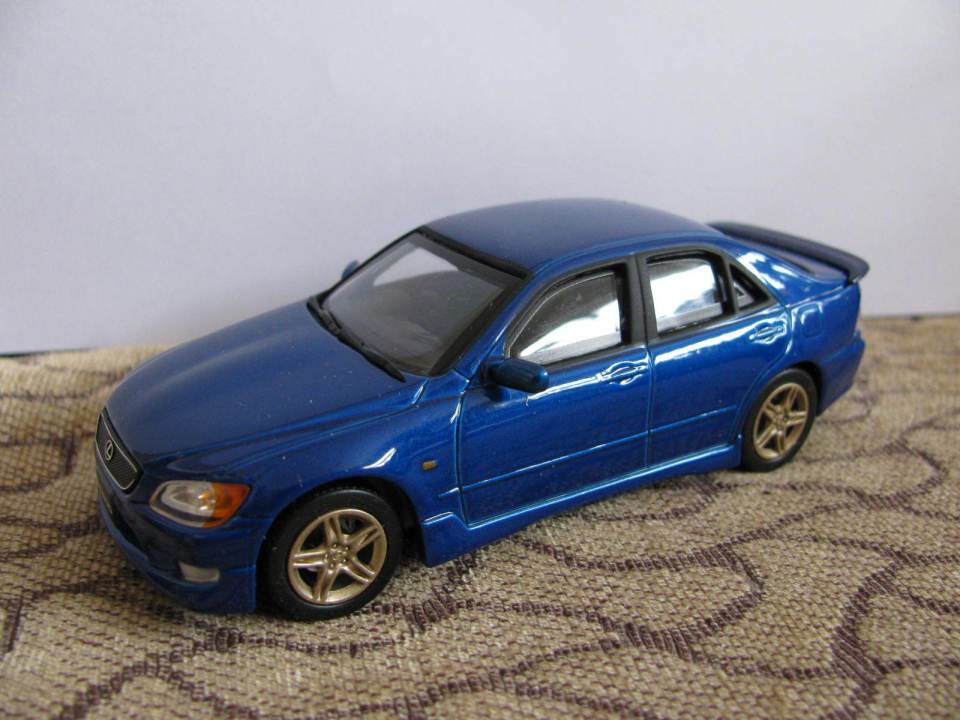
HIGH SPEED – TOYOTA LEXUS IS 200
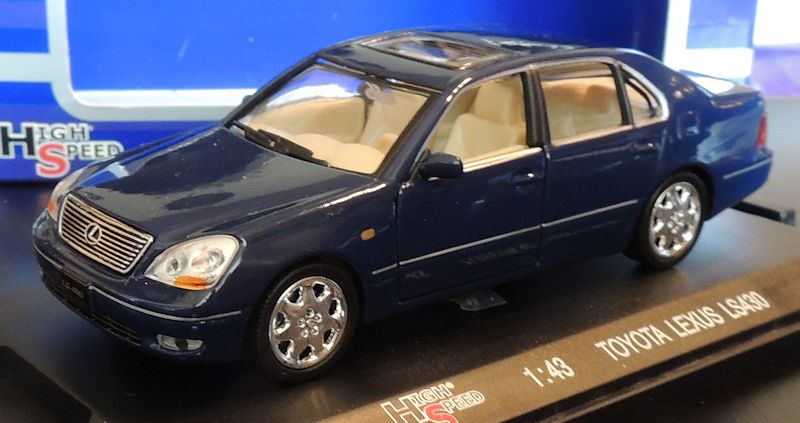
HIGH SPEED – TOYOTA LEXUS LS430
LEXUS – SC430

MINICHAMPS – LEXUS – SC430 CABRIOLET 2001

MINICHAMPS – LEXUS – SC430 CABRIOLET HARD TOP CLOSED 2001

J-COLLECTION – LEXUS – SC430 2005
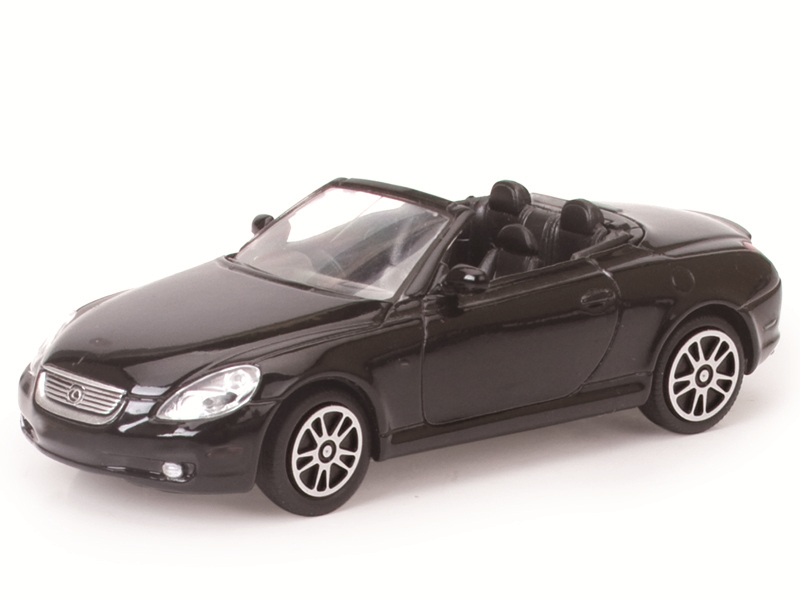
AUTOMAXX – LEXUS – SC430 CABRIO
LEXUS – GS450H

J-COLLECTION – LEXUS – GS450H 2006

J-COLLECTION – LEXUS – GS 450H hybrid 2006
LEXUS – CT 200H

KYOSHO – LEXUS – CT 200H 2011

KYOSHO – LEXUS – CT200H 2012

MINICHAMPS – LEXUS – CT200H 4-DOOR 2012
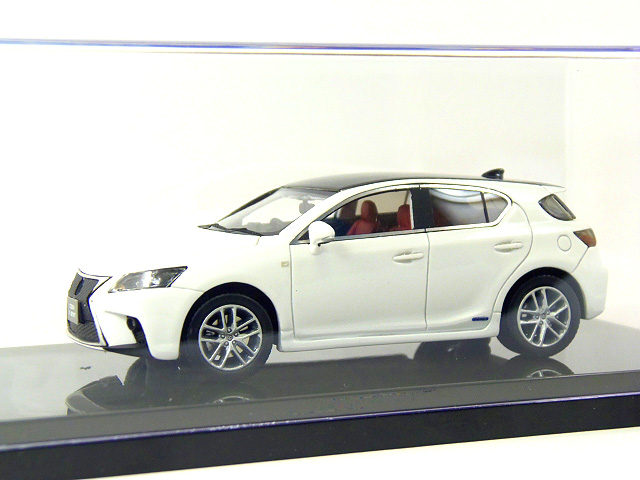
WIT’S W318 LEXUS CT200H F Sport 2014
LEXUS – ISF

HPI-RACING – LEXUS – ISF 2006

J-COLLECTION – LEXUS – IS-F 2008

J-COLLECTION – LEXUS – IS-F VIP RENN TAXI NURBURGRING VERSION 2009 TIMO GLOCK

J-COLLECTION – LEXUS – IS-F SAFETY CAR ROLEX MONTEREY 2009

J-COLLECTION – LEXUS – IS-F HUMBERSIDE UK POLICE 2009
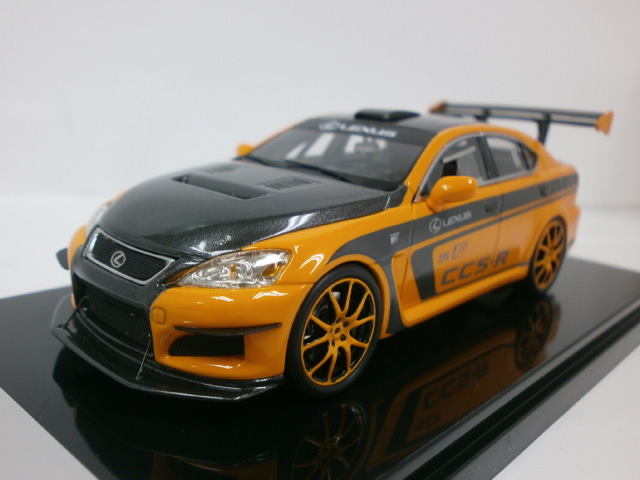
WIT’S – LEXUS IS F CCS-R CCS
LEXUS – IS 220d

J-COLLECTION – LEXUS – IS 220d 2008
LEXUS – IS 350 F

KYOSHO – LEXUS – IS 350 F SPORT 2013

KYOSHO – LEXUS – RC350 COUPE 2014
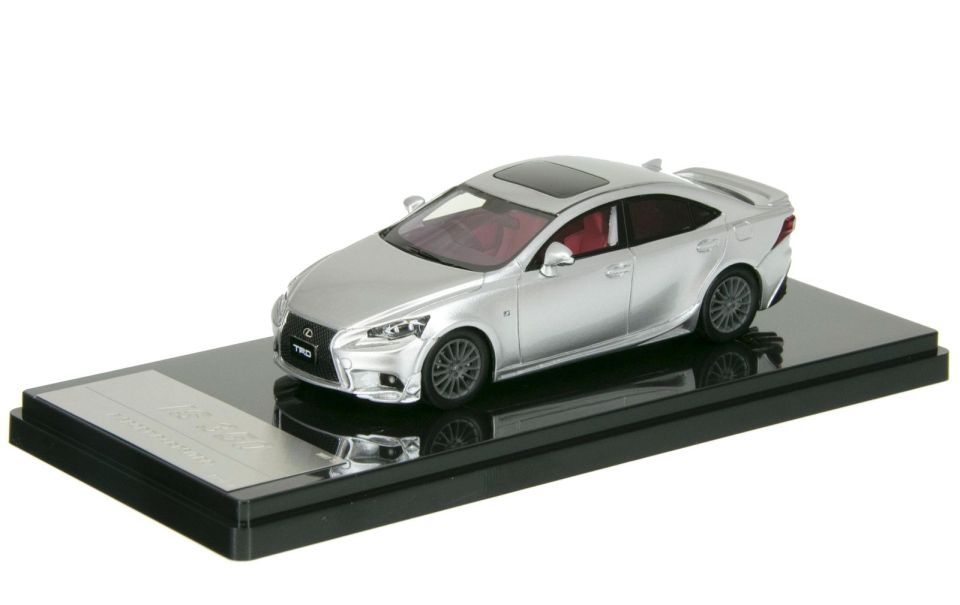
WIT’S – CT530 IS 350 F SPORTS
LEXUS – LS460

PROVENCE MOULAGE – LEXUS – LS460 2007
LEXUS – LFA

MINICHAMPS – LEXUS – LFA 2010

EDICOLA – LEXUS – LFA 2011

EBBRO – LEXUS – LFA N 0 24h NURBURGRING TEST CAR 2011

EBBRO – LEXUS – LFA NURBURGRING PACKAGE 2011
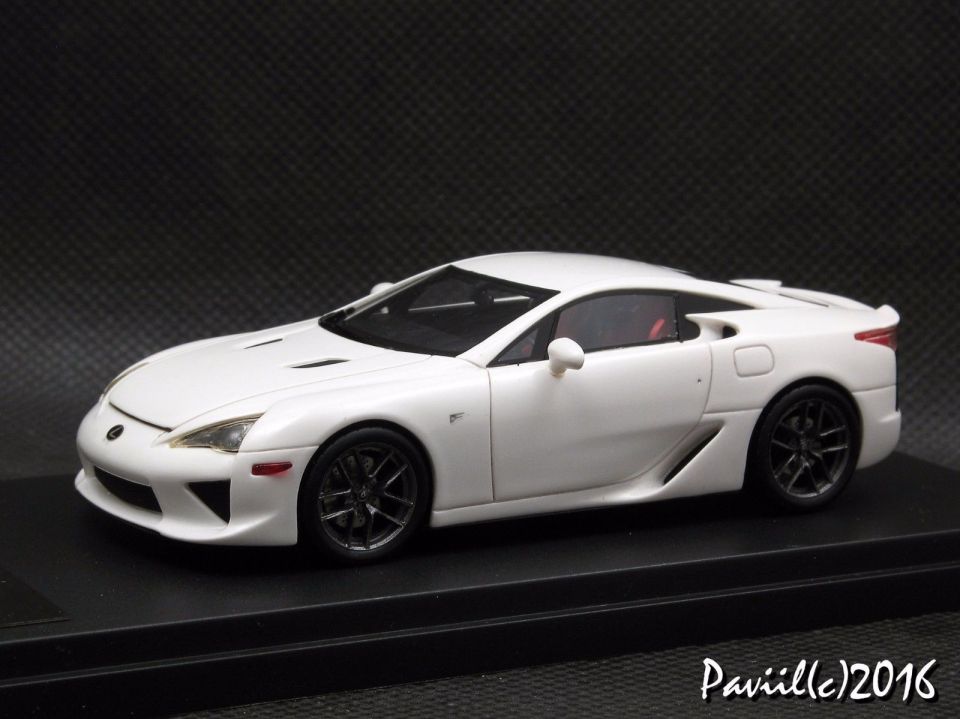
Wit’s – Lexus LFA 2011

EBBRO – LEXUS – LFA 2011

J-COLLECTION – LEXUS – LFA PACE CAR 2011

MARK43 – LEXUS – LFA COUPE 2012

MINICHAMPS – LEXUS – LFA 2012 – TOP GEAR WITH FIGURES
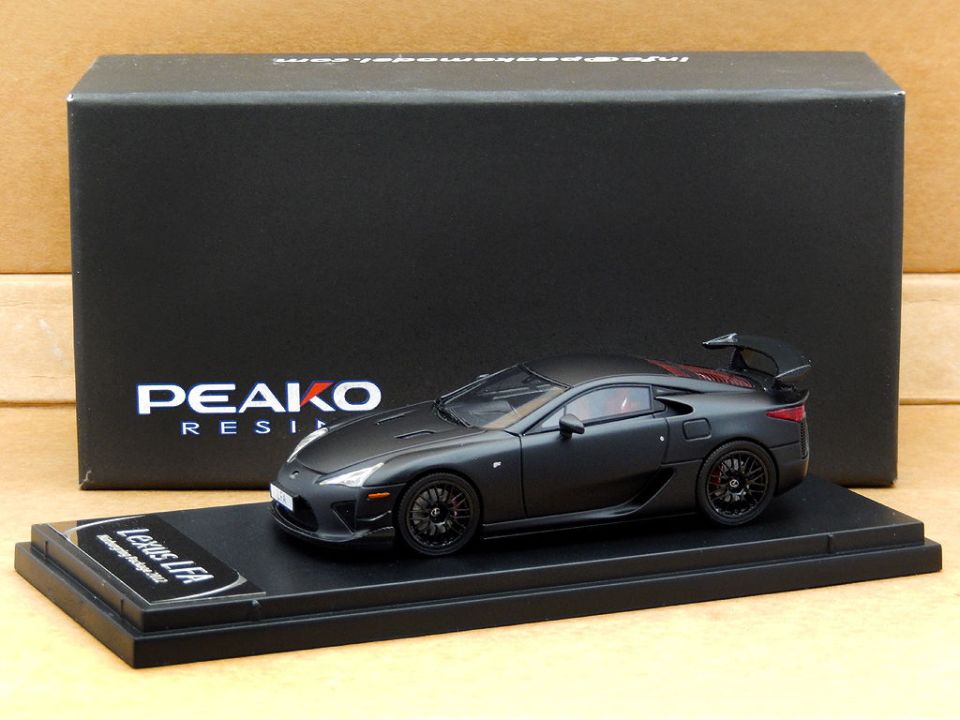
Peako – Lexus LFA Nurburgring Package Matt Black
LEXUS – LS 600
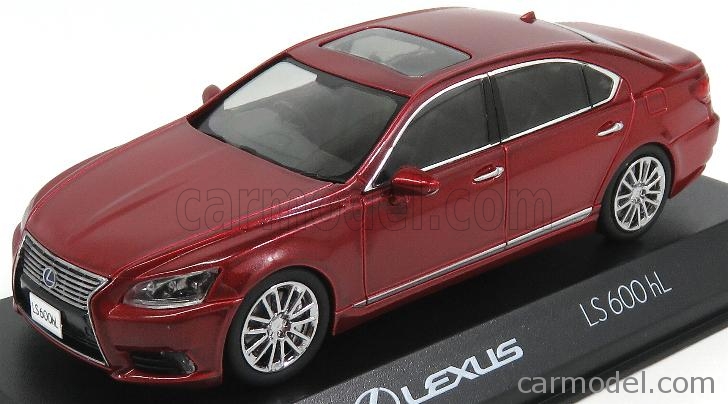
KYOSHO – LEXUS – LS 600 HL 2010
Lexus Altezza Drift Car
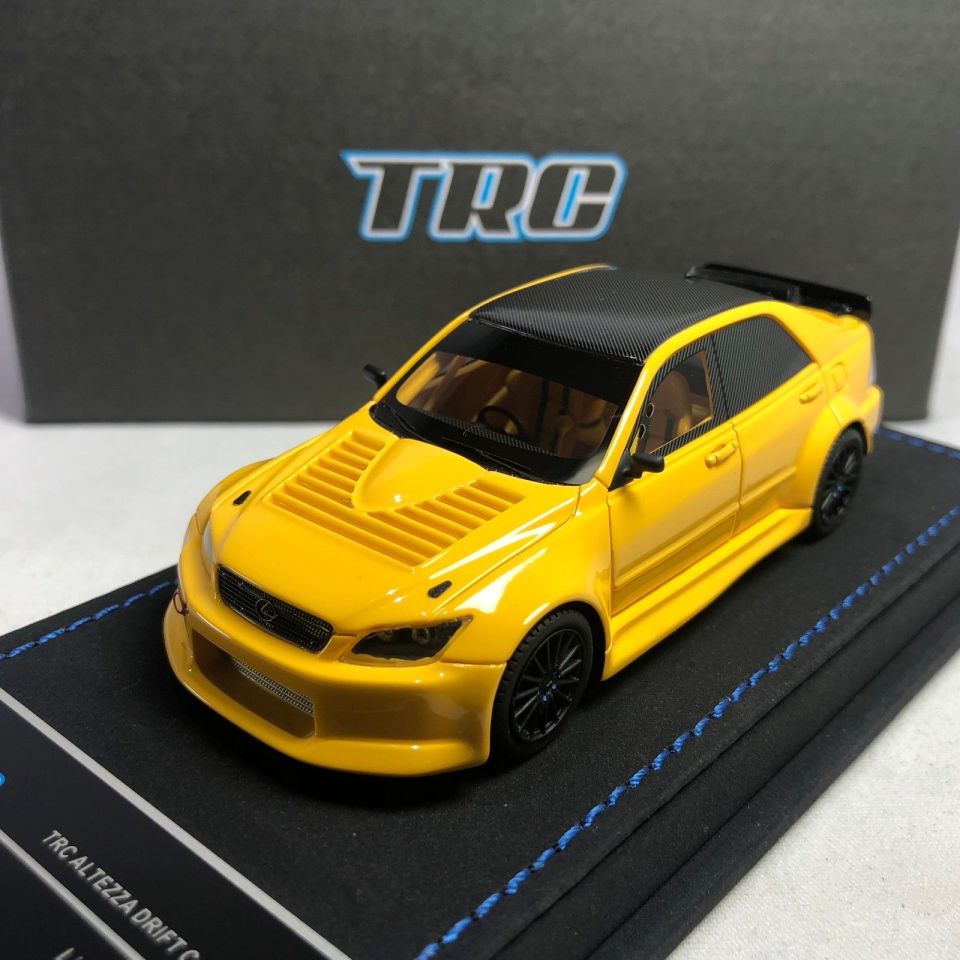
Peako – Toyota Lexus Altezza Drift Car 2016 James Tang
suv lexus

HONGWELL – LEXUS – RX300 1997

J-COLLECTION – LEXUS – RX400h HYBRID 2005 UK HAMPSHIRE POLICE

EDICOLA – LEXUS – LX570 2007

J-COLLECTION – LEXUS – RX350 2007

IXO-MODELS – LEXUS – LX570 2010
